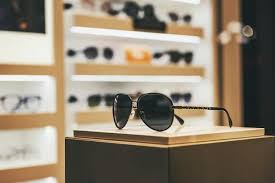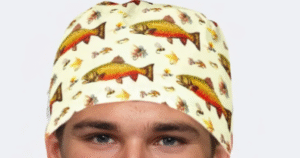Introduction
Defining Luxury in the Eyewear Landscape
Luxury sunglasses transcend mere function; they embody a lifestyle, an aura of prestige, and a meticulous commitment to craftsmanship. Unlike their mass-market counterparts, luxury eyewear fuses artisanal precision, heritage, and innovation. These products are not just visual shields against ultraviolet rays they are markers of identity, discernment, and socio-economic stature.
For more info please visit: https://market.us/report/global-luxury-sunglasses-market/
Evolution of Sunglasses from Utility to Status Symbol
Historically born from the necessity of eye protection, sunglasses have journeyed through eras of military use, Hollywood glamorization, and now, digital-age luxury. Today’s luxury sunglasses occupy a hybrid space where form meets function, with every hinge, tint, and temple engineered for elegance. Their evolution is a reflection of society’s shift towards conspicuous consumption and aesthetic self-expression.
Market Overview
Global Market Size and Growth Trajectory
The luxury sunglasses market has emerged as a multi-billion-dollar industry, valued at approximately USD 13.5 billion in 2024, with projections estimating it to surpass USD 20 billion by 2030. This growth is fueled by escalating disposable incomes, expanding middle-class segments in emerging economies, and the aspirational pull of luxury brands.
Key Regions Driving Demand
North America and Western Europe remain epicenters of premium eyewear consumption, accounting for a significant share of global sales. However, Asia-Pacific—especially China and India—is exhibiting rapid acceleration, driven by urban affluence, digital penetration, and fashion consciousness. Middle Eastern markets, particularly the UAE and Saudi Arabia, are also burgeoning with demand, rooted in high per-capita income and luxury brand affinity.
Consumer Behavior and Demographics
Affluent Consumer Profiles and Purchase Drivers
The typical luxury eyewear consumer is urbane, image-conscious, and values exclusivity. Their decisions are driven by brand legacy, craftsmanship, and product rarity. For high-net-worth individuals, sunglasses are often a gateway to more extensive luxury portfolios, serving as an accessible yet elite accessory.
Generational Preferences: Gen Z, Millennials, and Baby Boomers
Millennials and Gen Z are redefining luxury. While Baby Boomers lean toward heritage brands and timeless styles, younger consumers gravitate toward bold designs, sustainable practices, and digital brand narratives. The younger demographic also seeks brand alignment with social values—environmental responsibility, inclusivity, and authenticity are no longer optional.
Key Market Players and Brand Strategies
Dominant Brands and Their Market Positioning
Industry leaders like Luxottica (owner of Ray-Ban and Persol), Kering Eyewear (Gucci, Balenciaga), and LVMH (Dior, Celine) control a substantial share of the market through vertical integration and robust branding. These conglomerates use precision marketing, celebrity endorsements, and heritage storytelling to maintain aspirational value.
Strategic Collaborations and Limited-Edition Drops
Luxury eyewear brands have increasingly embraced scarcity marketing through limited-edition releases and collaborations with fashion designers, musicians, and visual artists. These curated collections serve dual purposes: reinvigorating brand relevance and catalyzing buzz among digital-native consumers. Case in point: Gentle Monster’s collaboration with Maison Margiela ignited global frenzy upon release.
Innovation and Design Trends
Integration of Smart Features and Sustainable Materials
Cutting-edge innovations have entered the luxury eyewear space. Smart sunglasses with AR features, Bluetooth connectivity, and UV tracking are gradually becoming status tech-accessories. Concurrently, there’s a surge in demand for eco-friendly materials—acetate from cotton fibers, titanium frames, and biodegradable lenses—highlighting an eco-luxury shift.
Aesthetic Directions and Artisanal Craftsmanship
Design trends oscillate between retro revivals—think oversized ‘70s silhouettes—and hyper-modern minimalism. There’s renewed appreciation for handmade detailing, enamel inlays, and architectural frame structures. The emphasis lies on subtle opulence—where the artistry is apparent not in logos, but in feel, finish, and form.
Distribution Channels and Retail Experience
Omni-Channel Strategies: Brick-and-Mortar Meets Digital
Luxury sunglasses brands are harmonizing digital convenience with tactile retail. E-commerce platforms are tailored for high-end product presentation, while flagship boutiques provide immersive brand experiences. Augmented reality tools for virtual try-ons, AI-driven personalization engines, and exclusive online pre-releases amplify consumer engagement.
Experiential Retail and Personalization
Flagship stores in fashion capitals now resemble curated art galleries, featuring bespoke fittings, concierge services, and private styling sessions. Personalization—whether through monogrammed cases, custom tints, or engraved frames has become a core component of the luxury eyewear journey.
Challenges and Market Barriers
Counterfeit Proliferation and Brand Dilution
The prevalence of counterfeit sunglasses continues to erode brand equity. With replicas often sold via social media and informal markets, discerning authenticity is a growing challenge. Luxury brands are responding with blockchain authentication, micro-engraving, and scannable NFC tags embedded in products.
Supply Chain Complexities and Raw Material Constraints
Premium sunglasses depend on rare and high-quality materials Italian acetate, Japanese titanium, German hinges. Global supply chain disruptions, fluctuating material costs, and geopolitical tensions pose tangible risks. Brands are increasingly investing in localized production and ethical sourcing to ensure resilience.
For more info please visit: https://market.us/report/global-luxury-sunglasses-market/
Future Outlook
Emerging Markets and Forecasted Trends
Markets in Southeast Asia, Africa, and South America are poised for luxury brand infiltration. Rising aspirational classes and improved access to global e-commerce are key enablers. In tandem, gender-neutral designs and hybrid eyewear (prescription-sunglass blends) are predicted to gain traction.
Technological Integration and the Future of Luxury Eyewear
As tech and luxury converge, the future of sunglasses may resemble wearable tech more than classic eyewear. Think lenses that auto-adjust to light, embedded health diagnostics, and AI-powered style recommendations. Yet even in this digital metamorphosis, the essence of luxury exclusivity, story, and sensorial pleasure will remain uncompromised.
- Seeing Clearly: Key Players and Innovations in the Luxury Eyewear Market
- Explore the evolving landscape of the luxury sunglasses market—where fashion, craftsmanship, and exclusivity converge. This in-depth analysis uncovers key market drivers, regional dynamics, material innovations, and the cultural forces shaping premium eyewear trends worldwide.
- #LuxuryEyewear #DesignerSunglasses #HighEndFashion #LuxuryLifestyle #SustainableLuxury #FashionAccessories #EyewearTrends #LuxuryBrands #CelebrityStyle #PremiumSunglasses #LuxuryMarket #GlobalFashion #ArtisanEyewear #StyleStatement #InfluencerFashion
Related posts:
 Fitness for Mental Clarity: Unlock Your Focus and Inner Strength with DG FIT MIND
Fitness for Mental Clarity: Unlock Your Focus and Inner Strength with DG FIT MIND
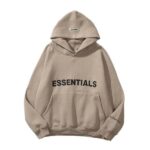 Essentials Hoodie Design Philosophy: Minimalism Meets Statement
Essentials Hoodie Design Philosophy: Minimalism Meets Statement
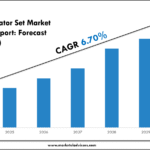 Chile Generator Set Market Trends & Forecast: Outlook to 2030
Chile Generator Set Market Trends & Forecast: Outlook to 2030
 Trusted Fiber Laser Cutting Machine Supplier Delivering Advanced Automatic Laser Cutting Machines
Trusted Fiber Laser Cutting Machine Supplier Delivering Advanced Automatic Laser Cutting Machines
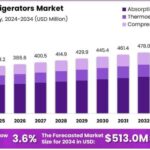 Small-Space Cooling: The Rise of the Minibar Fridge in Minibar Refrigeration
Small-Space Cooling: The Rise of the Minibar Fridge in Minibar Refrigeration
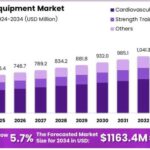 Aqua Gym Equipment Used in Holistic Wellness and Mind-Body Programs
Aqua Gym Equipment Used in Holistic Wellness and Mind-Body Programs
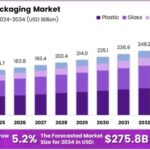 Transparency and Trust Through Beverage Packaging Supports Anti-Counterfeiting Measures
Transparency and Trust Through Beverage Packaging Supports Anti-Counterfeiting Measures
 Key Time Management Strategies for Small Business Owners and Freelancers in 2025
Key Time Management Strategies for Small Business Owners and Freelancers in 2025



